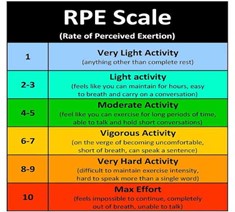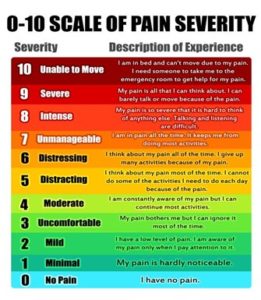Intensity – Am I working too hard or too easy?
Intensity – whenever this is mentioned we instantly think of slogans such as, ‘no pain, no gain’ or ‘go for the burn’ which if you are training for a competitive sport, they are great. For everyday fitness we need a measurement more realistic to what our goals are and include and element of some fun.
The government guidelines for physical activity / exercise are that you aim for 150 minutes of ‘moderate exercise’ in a week. For example, 5x 30 minutes or in a day do 3 x 10 minutes. You can gradually increase the minutes as your fitness develops. But what is moderate intensity/exercise? How do you know if you are working too hard or too easy?
Aerobic fitness /activity is defined as using your larger muscles in a rhythmical manner. Whereas you are using your heart, blood and lungs. Activities such as walking or biking, swimming or housework or dancing are a few examples.
Exercise intensity is how hard the activity feels to you in terms of your breathing and heart rate, whether you’re sweating or feeling hot, and how tired your muscles feel.
There are two basic ways to measure exercise intensity:
1. How you feel, while you’re doing it — your rate of perceived exertion (see RPE scale). Your perceived exertion level may be different from what someone else feels doing the same exercise. For example, what feels to you like a hard run can feel like an easy workout to someone who’s more fit. Plus, some people get flush whereas others get sweaty, and your breathing alters.
Its great to put a number on an activity and after a while the numbers will drop as your fitness improves so you can make appropriate adjustments to increase the intensity or move on to other forms of activity as your fitness increases.

Being active in the scale of 4-7 (the green and yellow section) reaps a lot of benefits as this is a great level to reproduce cells and enzymes (a bit like baking a cake at the perfect temperature). For some you may need to gradually build to this intensity.
2. Pain severity -If you have pain issues such as arthritis then you need to measure aerobic intensity as well as your pain as no one wants to be active for a few minutes and then laid up for days. Sometimes there will be discomfort but as you can see from the scale as you become more aware of your body. Sharp and hot unbearable pain is not good; however, some may feel out of their comfort zone, but manageable.

3. Your heart rate. Perceived exertion (first table) may not always be similar to your heart rate level, and it depends on the individual. But it can be a general guide to measure your exertion level. If you think you’re working hard, your heart rate is probably higher than usual.
You can use either way of gauging exercise intensity. If you like technology, you can check your heart rate with an activity tracker that includes a heart rate monitor. If you feel you’re in tune with your body and your exertion level, you’ll likely do fine without a monitor. To learn more about using your heart rate monitor or pulse then check out the blog labelled “walk your way to health and fitness in 2022”.